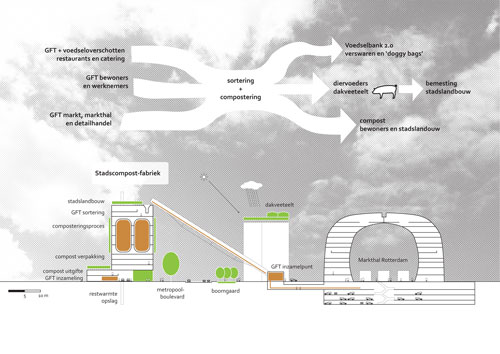During the Beijing Design Week 2013, architecture studio Venhoeven CS organized a workshop called ‘The Sino-Dutch Approach‘, commissioned by the Creative Industry Fund. This year, Amsterdam is guest city of the BJDW. In a group of 12 Dutch designers I travelled to Beijing to work on transformation strategies for the Fengtai industrial district, in the Southwest periphery of Beijing. The aim of the workshop is to generate crossover concepts with our Chinese counterparts, for sustainable development in the capital city. Many of China’s major challenges are found in Fengtai: air quality, water management, congestion, economic shift from production to services, migration and gentrification. The district has the potential to become a creative subcentre and gateway to Beijing.

Case 1: Dahongmen
The Dahongmen area consists of fashion wholesale complexes. There are plans for fashion retail zones, focusing on the exclusive brands. The challenge here is to develop the entire value chain, from production and creation to the consumer, in order to attract and maintain a variety of professionals and social groups in the area, necessary for an innovative environment where Chinese brands and trends can emerge.

Case 2: Yongding river
Beijing has a dramatic relationship with water. On the one hand there is so much water shortage that water is brought in from the Yangtse river in the South. The Gobi desert is approaching and the Yongding river itself is dry most time of the year due to dams and water usage upstream. On the other hand heavy rainfall has caused severe damage to the urban structures in Beijing, for lack of permeable surfaces. A new type of green living environment may revive the Yongding river floodplains and redirect rainwater to feed the river.

Case 3: Fengtai railway station
The new high-speed railway station and subway links will strengthen the position of Fengtai as gateway of Beijing. Passengers traveling from Hong Kong and Shenzhen to Beijing will pass through the area. The station surroundings therefore have the potential to become a hotspot of activities and meetings, that may function in a complementary way to alleviate the congested central area of Beijing. Rather than redeveloping the whole area, a stepwise strategy could provide a lively area of reused industrial buildings, bike and pedestrian routes, densified ‘hutongs‘ and function mix of housing with amenities and work spaces.

Development proposal for Fengtai station area
Smart City
The main exhibition of the Design Week is about Smart Cities, held in the China Millennium Monument Museum of Digital Arts. Curated by Lei Yang, it features many tools to use big data and new media to plan and enhance the city, such as Urban OS and OS City. The SprintCity planning support tool may also provide opportunities for cities like Beijing.
The irony is however, that at the moment the Chinese authorities do not give access to urban data and have to a large extent control over what happens at the Chinese social media. This prevents civilians from using and improving many of the smart tools.

Download the presentation of the Sino-Dutch Approach, by Ton Venhoeven.
Also read the daily reports by the Creative Industry Fund, and my travel journal (Dutch), including the names of all participants.











